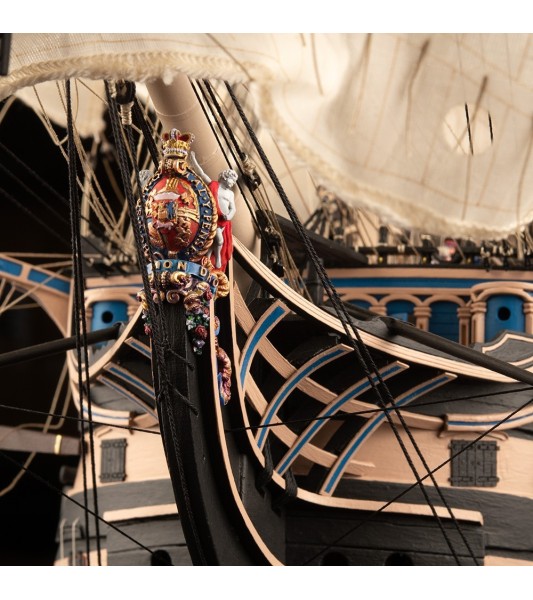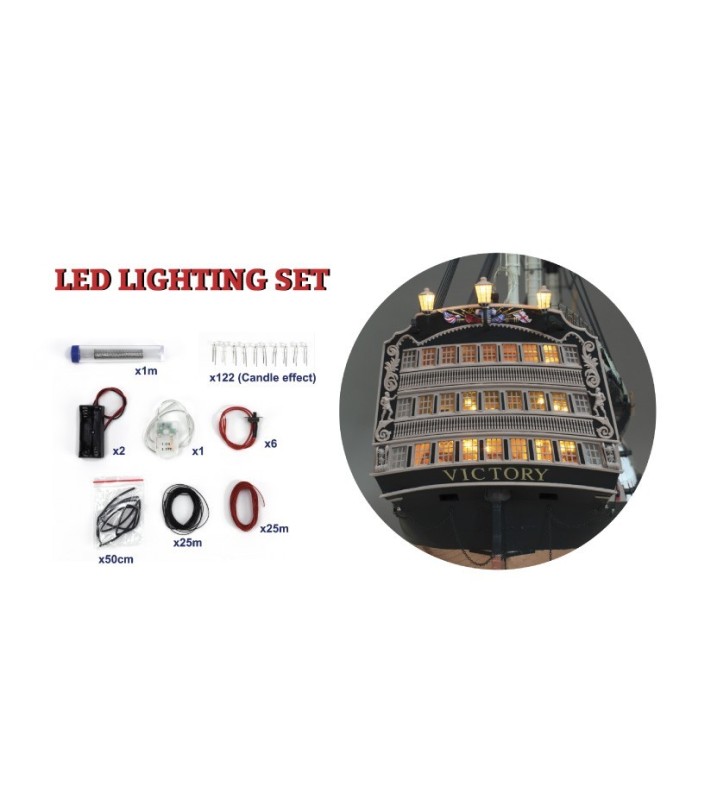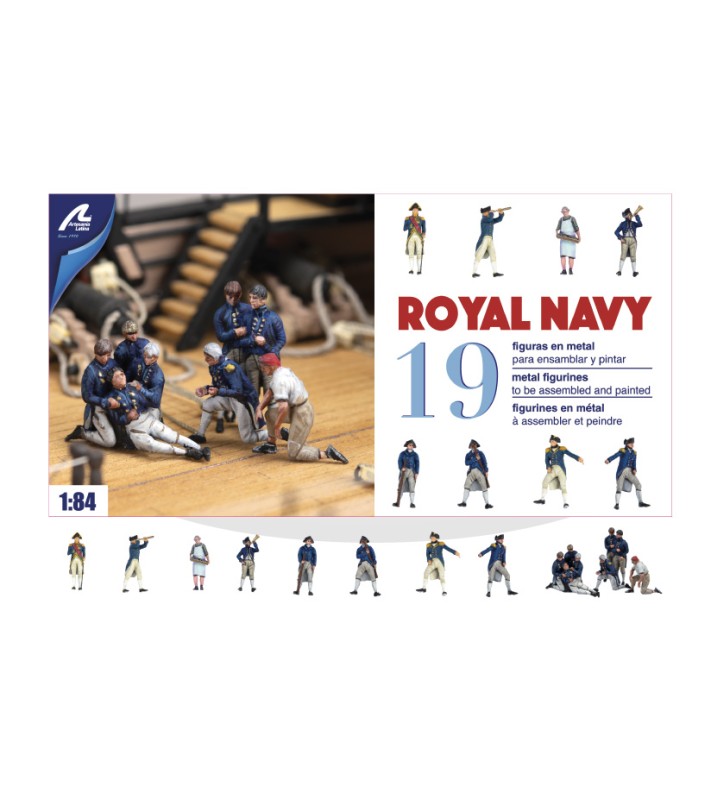CONTENTS OF THE HMS VICTORY ANATOMY WOODEN MODEL SHIP KIT
Assemble your 1:84 scale wooden model of the Anatomy of the HMS Victory, our extraordinary model of the 18th and 19th century English ship of the line. Its construction system using false keel and frames brings the assembly of the miniature closer to the construction of the real ship. Once built, it measures 1,202 mm long, 470 mm wide and 805 mm high -875 mm with the base-.
This Anatomy will allow you, while assembling the model, to examine in depth the construction and structure of the ship, as well as the very high level of detail. The model kit contains thousands of pieces of high-precision laser-cut board, hardwoods, brass and cast iron. As well as copper lining for the hull, cotton sails sewn and ready to be placed and a wood working base. Not forgetting the beautiful methacrylate base with the name in gold to display the model once finished.
For the assembly, you can follow our complete step-by-step video guide -very easy to follow- that you can watch for free on our Youtube channel -click here-. You can also scan the QR code on the box and on the parts list. It will be like a masterclass given by our professional modellers. The kit contains a printed summary assembly guide, as well as printed plans of the ship, which can also be downloaded free of charge -as well as the parts list- from the 'Instructions and Downloadable Content' button on this page.
In order for this fantastic Anatomy of HMS Victory to be a completely faithful model of the original replica, we recommend... First, paint it with your Specific Set of Water Based Acrylic Paints (277PACK11)sold separately. Secondly, to add your two 1:84 scale figurine sets, also sold separately, which will be available soon: Royal Navy (22900F1) y Sailors 1700-1815 (22900F2). And finally, illuminate the ship for even more realism with the 122 sail effect lights of the HMS Victory Model Ship LED Lighting Set (22900-LED).
A LITTLE HISTORY OF THE BRITISH SHIP OF THE LINE HMS VICTORY
The British ship-of-the-line HMS Victory is best known for her participation in 1805 in the Battle of Trafalgar as Admiral Horatio Nelson's flagship against the Franco-Spanish Armada. At the time, she was the largest ship in the British Royal Navy. Today, she lies in a dry dock in Portsmouth harbour (Hampshire) in the south of England as a museum piece. The English ship HMS Victory remains the flagship of the Second Sea Lord. It is all the more important because it is the only ship of the line that has survived to this day in true to original condition.
HMS Victory was launched in 1765. The rest of the work, such as the rigging, sails and armament, among others, was progressively completed until the British ship-of-the-line was ready for active service in 1778.
Two years after being assigned to command HMS Victory, Nelson took part in the Battle of Trafalgar, the most decisive of the Napoleonic Wars, as it was the battle that put an end to the French and Spanish navies, thus offering the United Kingdom a maritime supremacy that would last until the Second World War. However, Nelson did not have the chance to learn of his victory, as he was killed during the battle in close combat with the Redoutable, a large 74-gun French ship. Nelson was hit by a marksman from the gunwales of the Redoutable.




















































































